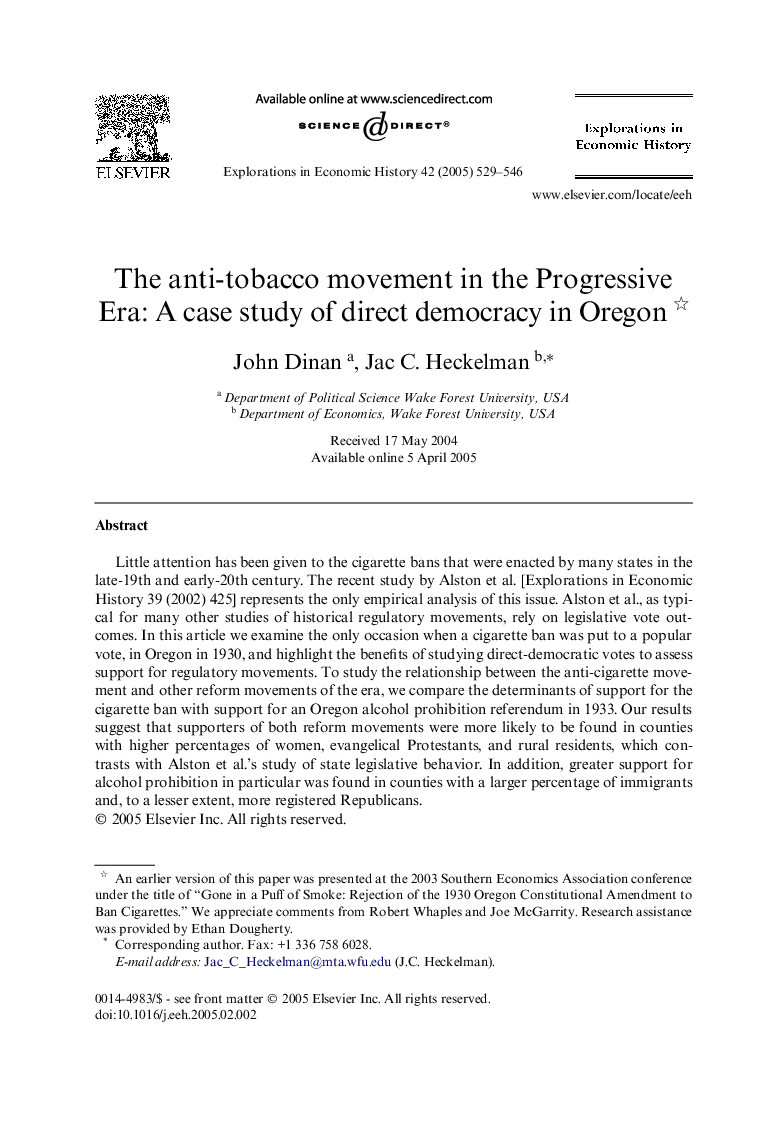| Article ID | Journal | Published Year | Pages | File Type |
|---|---|---|---|---|
| 9551290 | Explorations in Economic History | 2005 | 18 Pages |
Abstract
Little attention has been given to the cigarette bans that were enacted by many states in the late-19th and early-20th century. The recent study by Alston et al. [Explorations in Economic History 39 (2002) 425] represents the only empirical analysis of this issue. Alston et al., as typical for many other studies of historical regulatory movements, rely on legislative vote outcomes. In this article we examine the only occasion when a cigarette ban was put to a popular vote, in Oregon in 1930, and highlight the benefits of studying direct-democratic votes to assess support for regulatory movements. To study the relationship between the anti-cigarette movement and other reform movements of the era, we compare the determinants of support for the cigarette ban with support for an Oregon alcohol prohibition referendum in 1933. Our results suggest that supporters of both reform movements were more likely to be found in counties with higher percentages of women, evangelical Protestants, and rural residents, which contrasts with Alston et al.'s study of state legislative behavior. In addition, greater support for alcohol prohibition in particular was found in counties with a larger percentage of immigrants and, to a lesser extent, more registered Republicans.
Related Topics
Social Sciences and Humanities
Arts and Humanities
History
Authors
John Dinan, Jac C. Heckelman,
